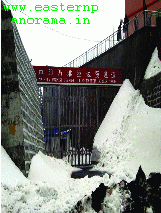Archives
Nathu-la trade: Past and Present
Nathu-la trade: Past and Present
The fifth year of trade at Nathu-La started again recently this year. One of the most sought after border trades in  India which was re-opened after nearly a half century of being closed in the wake of the Indo China war of 1962. Earlier, Nathu-La pass was used as a transit for the silk business and was therefore a part of the famed silk route. It was the only route through which business could be done with the then Tibet, the sovereign kingdom ruled by His Holiness the Dalai Lama.
India which was re-opened after nearly a half century of being closed in the wake of the Indo China war of 1962. Earlier, Nathu-La pass was used as a transit for the silk business and was therefore a part of the famed silk route. It was the only route through which business could be done with the then Tibet, the sovereign kingdom ruled by His Holiness the Dalai Lama.
Nathu La has a history of trade. This history has evolved for very practical reasons. Nathu - La is the closest overland access to Lhasa, the capital of Tibet from India. Also, the route from Nathu - La to Lhasa is through the most populated regions of Tibet. Shipki - La and Lipulekh empty out into near uninhabited grasslands. Nathu - La’s reputation of being the conduit of communication is also borne out by its name – a corruption of the Tibetan word, ‘Gnatui’ - which means the ‘listening ear pass’. Mountain passes usually derive their names from their shapes, access routes and locational landmarks; Nathu - La derives its name from the nature of its usage - that of linking people. On the history of Nathu - La trade, a booklet entitled ‘History Reclaimed, Nations Brought Closer’, published by IPR Department, Govt. of Sikkim, further states: “Nathu - La, as also Jelep - La to its South, were being engaged for trade even before they were leveraged by the British to access Tibet. The pragmatic traders of the border trade’s hey-days point out that there must have been trade over Nathu - La ever since there were people on either side. And what a trade it must have been! As one trader shared; his mule train of biscuits to Tibet alone used to be100 - strong at one time.

